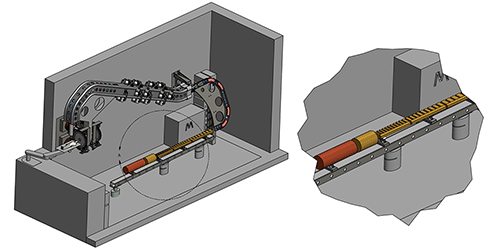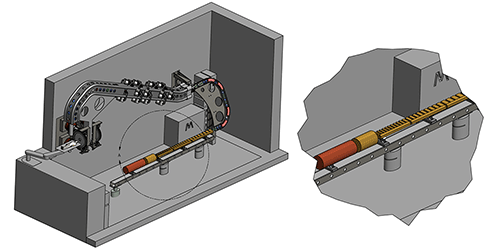A Room-Sized Linear Accelerator for Proton Therapy
Proton and ion therapies are the preferred treatment for many cancers, such as tumors that are deep within the body. All of the nearly 100 worldwide facilities that offer this treatment use cyclotrons or synchrotrons to accelerate the charged particles to the necessary energies. Compared to these circular machines, linear accelerators (linacs) offer certain advantages for treatment, but in addition to several design challenges, their large footprint is difficult to accommodate in hospitals. Stefano Benedetti and colleagues from CERN in Switzerland describe the first fully linear design that overcomes this size problem.
What makes linacs preferable to circular accelerators is that the energies of their output beams can be adjusted rapidly (in milliseconds) and without loss of beam intensity. The beam energy determines how deeply the protons or ions will penetrate into tissue, so this tunability is useful for adjusting the beam position within the body as the patient breathes or to precisely hit different spots on a tumor.
Over the last few decades, researchers have explored various linac schemes. One of these, known as TULIP, coupled a linac to a cyclotron and achieved a compact footprint by winding a segment of the accelerator around the patient area. Benedetti and colleagues have conceptualized an “all-linac” version of TULIP that eliminates some of the technical complications of the hybrid model. Their design builds on developments such as improved radio-frequency technologies for injecting the particles into the machine and for accelerating them, and new particle-tracking methods. The new version would deliver protons capable of penetrating 33 centimeters into tissue—a figure on par with that of existing designs—and would fit in a 10-meter by 20-meter room.
This research is published in Physical Review Accelerators and Beams.
–Jessica Thomas
Jessica Thomas is the Editor of Physics.





